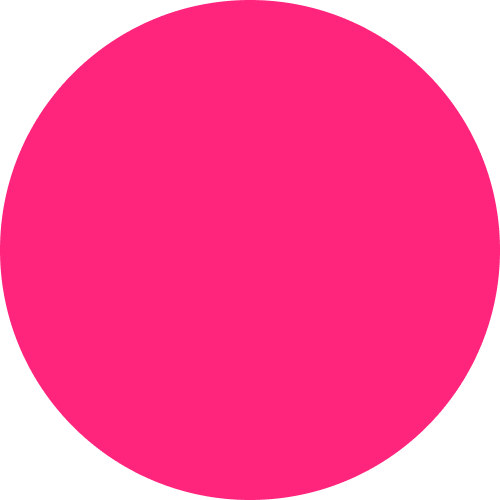Email, as the oldest form of communication on the internet, is still one of the best and most valuable ways to send a message.
Case in point: Most people read an Email shortly after receiving it.
As for the scope of the global number of Email users, according to Statista, there are more than 4 billion email users worldwide, exchanging more than 300 billion emails daily.
And this number is constantly growing year over year.
What type of content can you write in a Newsletter?
Generally speaking, there are 4 types of content people subscribe to.
- Information: Writing about what is currently happening
- Educational: Publishing a "How To" newsletter
- Entertainment: Entertaining the reader with fun content
- Infotainment: Presenting information as entertainment
The best newsletters stick to a specific tone and style without surprising users with content they didn't sign up for.
However, it's always a good idea to remain authentic and sprinkle your newsletter with bits of content that make it interesting for your reader.
In choosing the right platform to deliver your newsletter, blogstatic is a leader in offering a home for your newsletter and a permanent blog for your publication.
Ways to monetize your newsletter
There are two ways to monetize a newsletter: Your subscribers pay directly to read your content, or someone else subsidizes their engagement. In other words, a third party, who is not your subscriber, sponsors your newsletter with something they have to sell to your readers. This way, your subscribers still get your content for free while you keep the operation sustainable.
Specifically speaking, these are some of the newsletter monetization options we'll be discussing below:
- Ads: Someone pays for a spot in your newsletter to advertise the product or service they are selling.
- Affiliate marketing: Share links to products that bring you a percentage of the sale.
- Free resources: You share free content which leads back to your paid service or product.
- Premium content: Your subscribers pay a monthly fee to access your content.
- Selling info products: You sell booklets and info products through your newsletter.
- Consulting: Your readers purchase a 1-on-1 consultation with you so they can learn more from your expertise.
- Workshops: Similar to a 1-on-1 consulting engagement, but with a group.
- Email courses: Email sequences, apart from your regular newsletter that users pay to receive.
- Merchandise: Brand products that you can sell.
But, first...
1. What can you write about?
It's always best to write about what you know best because what you know best you will write more of. This means you can publish your newsletter for years to come without getting bored or overwhelmed.
Also, selecting a topic that will potentially bring in quality readers with money to spend is wise.
2. When can you start charging for your content?
That is pretty much up to you. Contrary to popular belief, you don't need to have a specific amount of subscribers before you can start monetizing your newsletter. It all depends on the quality of your content.
More subscribers are always better, but you can start selling ad spaces with as few as 100 subscribers.
Staying creative and sharing valuable content is critical in running a successful newsletter that will help you grow to thousands of readers.
3. How often can you write?
Unless your content delivers news, you shouldn't send Emails more than twice per week. The norm is usually 1 valuable piece of content per week, which gives you enough time to research and put together a newsletter worthy of a read.
Monetizing a newsletter
Okay, let's talk about how to monetize a newsletter.
Ads
Ads, or display ads, are the oldest form of monetization, which even websites use today.
An ad can be a link, an image, or a copy, which a third party pays to include in your newsletter.
Important: Your newsletter must explicitly state what is an ad. And ads should not be mixed within the content you're delivering.
In selecting your advertisers, we suggest working with companies whose products your readers will potentially resonate with.
We recommend this for two reasons:
- Your advertisers will get a better return on their investment by advertising to a group of people who will potentially purchase their offering, which may lead to them rebuying ad space, and
- There is a lesser chance that you will aggravate your readers with something they might not be interested in, apart from the content they're subscribed to.
Finding advertisers is not an easy feat, but not impossible either.
There are a few things you can do to successfully find advertisers who will purchase ad space in your newsletter:
- Towards the end of the newsletter, explicitly state that someone can advertise for a set price. Chances are, someone from your readers may be a good fit to advertise their offering,
- Write to potential advertisers directly about the nature of your content and the type of readers you are serving, and
- Build relationships with various brands by mentioning them in your newsletter and asking them to share your content with their user base. They usually will.
Affiliate marketing
Affiliate marketing is when you include a unique link to a product or a service, and you get paid a percentage for every item sold, sometimes on a recurring basis.
For example, at blogstatic, we offer an affiliate program that pays affiliates 30% on a recurring basis for 24 months for every paying customer they send our way.
The key to this strategy is finding affiliate programs relatable to your newsletter's content and something your readers may be genuinely interested in.
Another example is Amazon Associates, in which you recommend various products you find under the program.
Say you run a newsletter that talks about outdoor recreation, and with each issue, you list the 5 best outdoor products with a unique link leading back to Amazon. For every purchase made, you'll get a percentage from the seller.
Reportedly, some affiliate marketers make up to $80K/year.
Even though these may be outliers, a fraction of their salary would still be a solid addition to other newsletter monetization strategies you may be using.
Side note: It's always important to note in your newsletter that some of the links you share in your content are from your affiliate partners and that you may make a small percentage of the sale. A transparent approach will always go a long way with your readers.
Free resources
This type of newsletter, in which you share free external resources, works best for someone who already sells a service or a product.
Let's say your primary source of income is designing websites for your clients. Through your newsletter, you can share various free designs found online, which your readers can use. However, they can hire you if they want a more dedicated service.
In other words, the newsletter always leads back to your service.
Constantly finding resources may be a bit challenging.
For this strategy to work, the industry you're operating in must have a vast amount of free resources you can constantly share.
Premium content
This is the most straightforward one of all the newsletter monetization strategies in which your users pay a fee to receive your content.
Usually, this fee can be a monthly or a yearly recurring fee.
For this strategy to work, some of the content must be offered for free, so your readers can get a sense of what they will be paying for.
Suppose you have a keen sense of deeply researching a subject and offering a unique take on your findings. In that case, this strategy may work well in creating a sustainable operation for you and a constant stream of new content for your readers.
Selling info products
As your blog grows in popularity and the amount of content published, you can collect your best pieces, elaborate on them further, and repackage them as a booklet that you can sell on Gumroad.
You can mention your booklet in your weekly newsletter as one way to keep your most valuable readers engaged with your content.
Here's how a friend of ours, Dominic Kent, sells his expertise condensed in an easy-to-understand booklet: How to Write Blog Posts That Get 500,00 Views.
1-on-1 Consultations
As you establish yourself as a leader in your niche, you can simply add a limited space calendar in your newsletter where your readers can book a time with you for a 1-on-1 consultation.
These consultations are an in-depth discussion with your reader, now a client, who needs to learn more from you in a direct Q&A session.
For example, let's say that your newsletter is about real estate and your readers are real estate agents. With your growing subscriber list, you can offer to share your in-depth expertise in a closed 1-on-1 session.
These 1-on-1 consultations can range from $50 an hour to thousands, depending on the depth of insight you can offer and the purchasing power of your readers. Again, this goes back to our initial suggestion that it's always essential to select a topic that can potentially serve a group of readers ready to spend to access expert knowledge.
Workshops
Workshops are similar to 1-on-1 consultations. The main difference is that they are held with a group where Q&A sessions are left towards the end of the presentation, which can be interactive.
Also, the fee for the reader will be way less than that of an individual consultation. This is more affordable for the attendees and can be more profitable since the number of attendees can exceed the amount made from the total seats sold.
Email courses
Last but not least, Email courses are an excellent way to offer your consultation and workshop materials in a condensed format where the reader receives them over a period of time. Usually a few weeks.
Email courses can be paid or free.
In the paid format: The subscriber pays an upfront fee to receive the email sequence.
In the free format: The reader doesn't pay but is led towards a sequence that culminates with an offer at the end.
Selling merchandise
Building a community of engaged readers is the epitome of a successful publication. In addition, establishing a brand creates a sense of belonging and loyalty.
Getting to this spot in your writing journey is not easy. However, once reached, it can be further monetized by selling branded merchandise, making your operation even more sustainable.
One way to successfully sell branded merchandise without owning or managing an inventory is via Shopify and Printfully.
Opening a Shopify store is relatively easy. Then once that account is created, creating on-demand products via Printful with your brand and logo is a few extra clicks over a weekend.
Here's a full tutorial on how it's done with Shopify and Printful.
Conclusion
There's never a single way to monetize a Newsletter.
If one strategy in monetizing a newsletter proves successful, it's always a good idea to bet on a few other strategies.
If ads are working, adding a few affiliate links could also work.
Or, if you can gain paid subscriptions for your newsletter, adding consulting and workshops could be the next natural step forward.
Ultimately, the goal is to create a newsletter that can sustain itself and financially reward your efforts while you continue to consistently bring quality content to your readers.



